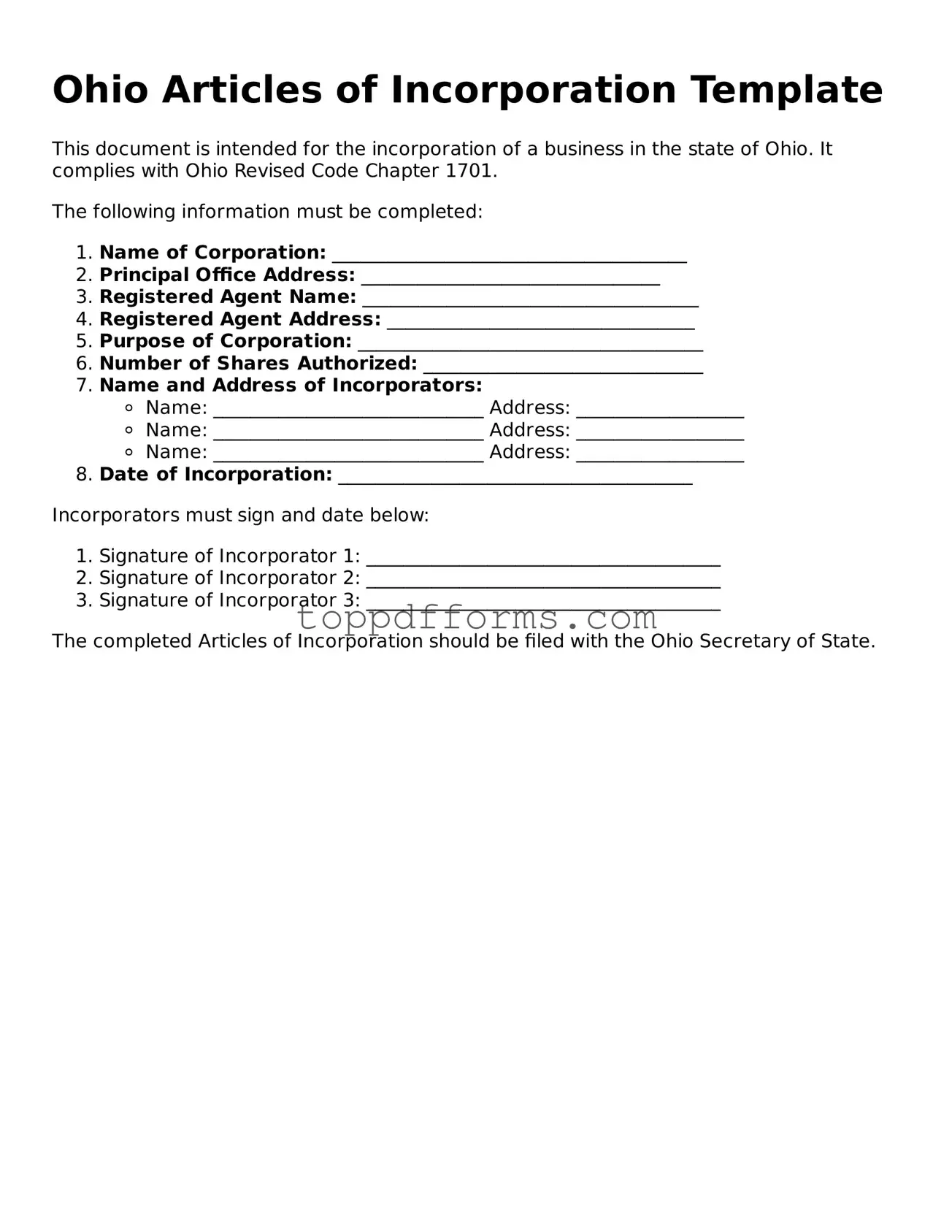What is the Ohio Articles of Incorporation form?
The Ohio Articles of Incorporation form is a legal document required to establish a corporation in the state of Ohio. This form outlines essential information about the corporation, such as its name, purpose, registered agent, and the number of shares it is authorized to issue. Filing this document with the Ohio Secretary of State is a crucial step in forming a corporation and provides the legal recognition necessary to operate as a corporate entity.
Who needs to file the Articles of Incorporation?
Any individual or group looking to start a corporation in Ohio must file the Articles of Incorporation. This includes small business owners, entrepreneurs, and organizations aiming to operate as a corporation. By completing this form, founders create a separate legal entity that can own property, enter contracts, and protect its owners from personal liability for the corporation's debts and obligations.
What information is required on the form?
The form requires several key pieces of information. First, you must provide the corporation's name, which must be unique and not already in use by another entity in Ohio. Additionally, you need to specify the purpose of the corporation, the address of the principal office, and the name and address of the registered agent. The registered agent is responsible for receiving legal documents on behalf of the corporation. Lastly, you will need to indicate the number of shares the corporation is authorized to issue.
How much does it cost to file the Articles of Incorporation?
The filing fee for the Ohio Articles of Incorporation varies depending on the type of corporation you are establishing. Generally, the fee is around $99 for a standard corporation. However, additional fees may apply if you choose expedited processing or if you need certified copies of the documents. It is advisable to check the Ohio Secretary of State's website for the most current fee schedule and any potential changes.
How long does it take to process the Articles of Incorporation?
Processing times for the Articles of Incorporation can vary. Typically, it takes about 7 to 10 business days for the Ohio Secretary of State to process standard filings. If you opt for expedited service, the processing time can be reduced to as little as 24 hours. Keep in mind that these times may fluctuate based on the volume of applications received and other factors, so it's wise to plan accordingly.
What happens after the Articles of Incorporation are filed?
Once the Articles of Incorporation are filed and approved, the corporation is officially created. You will receive a confirmation from the Secretary of State, which serves as proof of your corporation's existence. Afterward, it is essential to comply with ongoing requirements, such as obtaining necessary permits, filing annual reports, and maintaining good standing with state regulations. This ensures that your corporation continues to operate smoothly and legally in Ohio.
